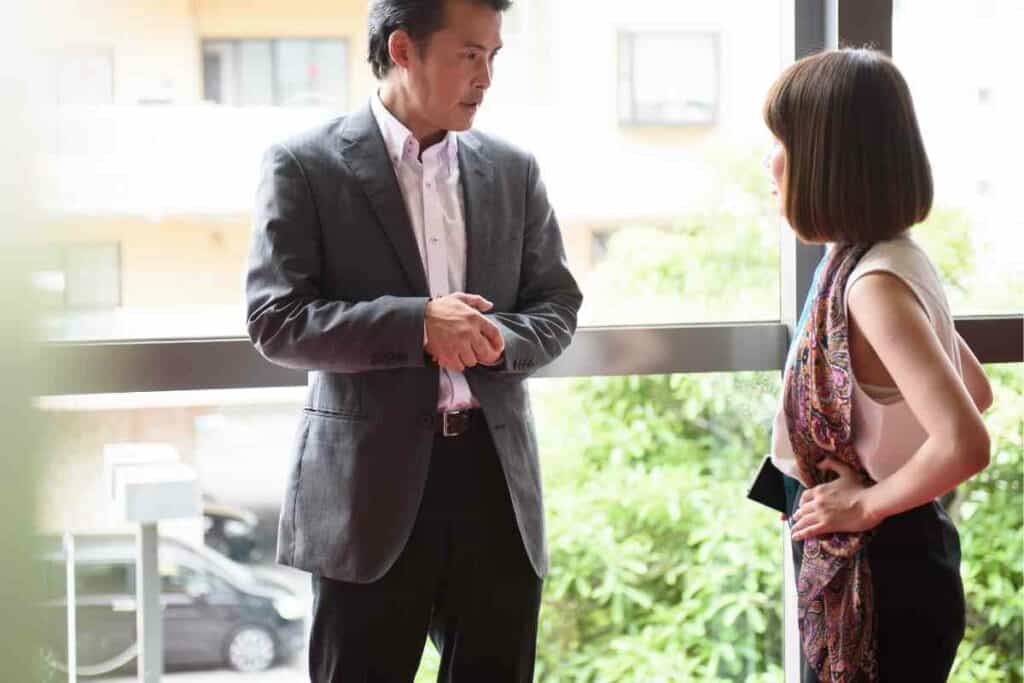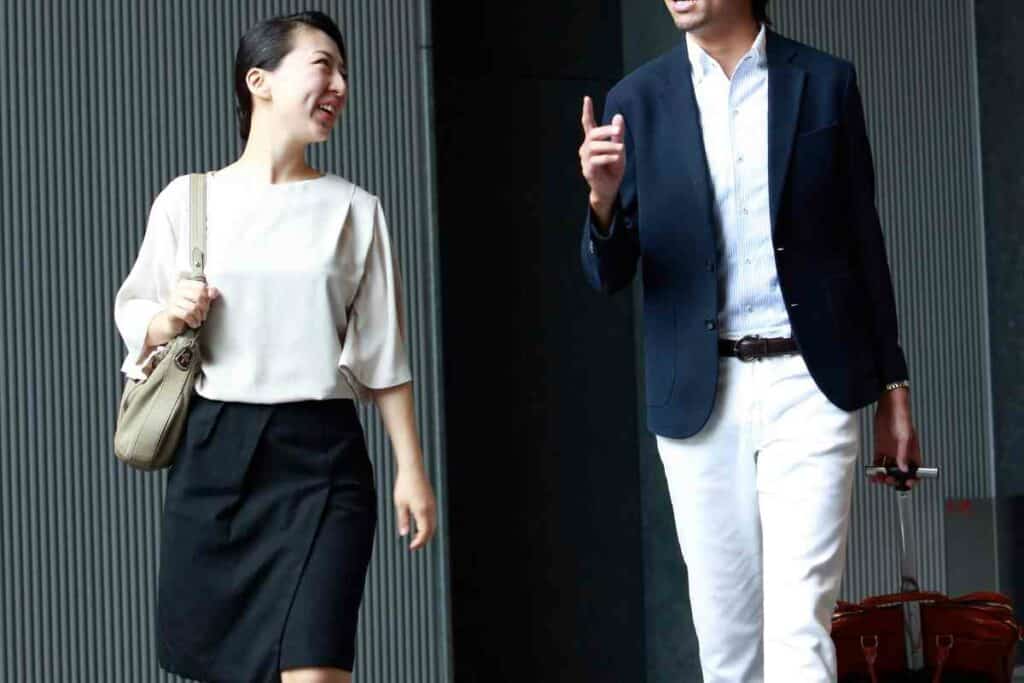It’s important to get it right when learning to dress as a female in business.
After all, a good first impression counts for a lot, and clothes play an important part in how confident we feel and act.

So, let’s take a look at Japanese business attire for females.
Table of Contents
The Importance of Choosing the Correct Business Attire
Although there is a fairly universal business dress code in Japan, it’s important to do your research as dress codes can vary slightly from business to business.
Read next – The 2025 Japanese Work Permit
Traditional Japanese customs and etiquette are still widely practiced in the business world and must always be respected.

It’s a good idea to ask around companies you may be working with to make sure you get the dress code right.
It’s not too hard to get this wrong, just remember; when in doubt, dress more formally and you will not regret it!
Many people have been embarrassed when turning up to a meeting after throwing a suit jacket on with a pair of jeans only to find a room full of suited professionals waiting for them.
Always err on the side of caution.
Also Helpful ?
The Basics
In Japan, business attire almost always consists of a dark-colored suit. This is seen as a staple for men and women.
Often paired with a light-colored shirt and dark shoes, this is the classic uniform for business professionals in Japan.
Are there any items that should be avoided?
Let’s see:
- Revealing clothing: Steer clear of any revealing clothing as it does not convey a professional image.
- Flashy jewelry: This is often seen as distracting, stick to light, simple jewelry instead.
- No bright and bold colors – dark suits, and skirts paired with light-colored, plain shirts are the look you should aim for.
For females, a dark-colored skirt suit should be a key part of your business wardrobe.
It’s important to remember the basic points of dressing in a restrained and formal way.

Some significant ideas to remember when learning to dress for business in Japan are:
- Dress formally and conservatively: tailored dress suits are perfect, or a dress with a suit jacket.
- Skirts: Should be knee length or longer, any shorter, and this will be seen as unprofessional.
- Wear closed-toe shoes: Opened-toed shoes, such as sandals, are seen as beach attire and are not suitable for the office environment.
- Tattoos: Should be covered up whenever possible; they may be seen as unprofessional in some settings.
- Perfume: Should be light and not too overpowering.
Acquiring Well-Fitting Business Attire in Japan
Finding well-fitting business attire is incredibly important in Japan.
Too tight or too loose and this could be seen as improper. Many females attend a specialist suit store to ensure they get a correctly fitting, professional-looking suit.

By asking friends or colleagues for recommendations or researching online, you should be able to find good quality stores that will fit you properly for female business wear.
It may be beneficial to have your measurements taken by a tailor before you start shopping.
Alternatively, you can provide these measurements yourself; be careful, this bit is really important!
Try watching some YouTube tutorials on how to take female suit measurements to get this bit right. Precise measurements are key to a well-fitting suit.
When you have your business attire, don’t be afraid to ask for alterations if the finished look is not quite to your taste.
Crisp, clean lines are what you should aim for, you should look and feel confident.
Exploring Different Materials and Fits
Once you have your measurements, it’s time to start trying out some looks.
Don’t be afraid to try on different styles and colors (keeping to muted tones, such as black, navy, and grey).
Getting quality business wear can be expensive so you want to be happy and comfortable in your choice.
Remember to take into consideration the different seasons. Japan has four distinct seasons: winter, spring, summer, and fall. In fall and winter, a thick coat and stylish hat will be necessary.
The warmer weather in spring may require a lighter jacket. Linen and cotton would make good material choices for the hot summer months.

Consider the following when making your decision:
- Wool: The most common material for professional workwear for females, it’s durable and has a nice drape to it.
- Polyester: Known for being lightweight and easy to care for, it’s not easy to wrinkle which is a huge plus point! It’s not as breathable as wool, so may not be the best choice for wear in warmer weather.
- Cotton: Easy to wash and care for at home, a great option for warmer weather as it’s so lightweight.
- Silk: This could be a bit over-the-top depending on your business, silk is a delicate material and has a luxurious feel. It does require special care when cleaning, which is something to consider.
When considering the fit of the suit remember that Japanese sizes tend to be much smaller than Western sizes so size up when choosing a suit if you need to.
The fit should be not too tight, but not too loose – it’s in your interests to get this exactly right.
Japanese suit jackets for females tend to sit higher than western style jackets.
They usually fall to just below the waist and do not cover the hips. The sleeves of a Japanese suit traditionally hit just above the wrist.
The final tailored look should be not too tight or restrictive. At the shoulders, you should have plenty of movement and a comfortable fit. The waistline of the jacket should fall at the natural waist.
Pant legs should be straight leg with a slight taper. The pants should comfortably fit around the waist and hips and not be too tight.
Final Thoughts on Japanese Business Attire for Females
Wearing well-fitting, quality business wear demonstrates respect for the company and Japanese culture.
In Japan, by dressing in a similar way to your work colleagues, you are showing unity and solidarity with your company.
Females are expected to dress conservatively and elegantly to show reliability and competence.
- 12 Things Tourists Should NEVER Say in Japan
- Kissing Robot: Exploring the Popularity of the Chinese Kissing App
- Unlocking the Secret Dating Rituals Only Locals Know in Japan
- Samurai Armor: Ancient Protection for Japan’s Elite Warriors
- 10 Amazing Facts About Schools in Japan: Unique Traditions and Educational Practices
- Where can you see snow monkeys in Japan: Best locations and viewing tips









